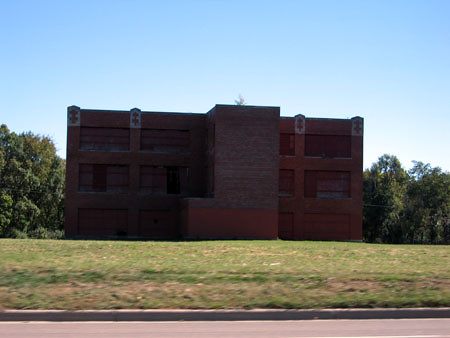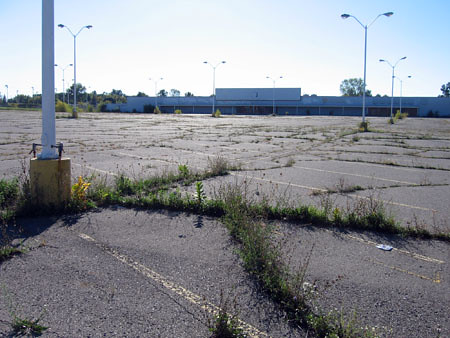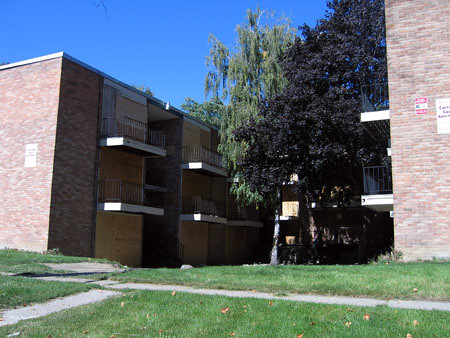 Flint, Michigan was once widely known as the birthplace of General Motors. In it’s heyday Michigan helped usher in the era of the automotive industry by becoming one of the most industrialized cities in Michigan and possibly the U.S. In 1978 Flint had a population of around 190,000 (not metro area) and GM locally employed 80,000. The city had a striving economy, industry, and a large population of people.
Flint, Michigan was once widely known as the birthplace of General Motors. In it’s heyday Michigan helped usher in the era of the automotive industry by becoming one of the most industrialized cities in Michigan and possibly the U.S. In 1978 Flint had a population of around 190,000 (not metro area) and GM locally employed 80,000. The city had a striving economy, industry, and a large population of people.In the mid-1980’s GM was making record profits and was one of the warhorses leading America out of the 1980’s recession. But quite randomly GM opted to close eleven of Flint’s industrial plants. 40,000 people (and families) suddenly lost their jobs. While GM basked in the profits from the decision; Flint, Michigan was ushering in an era of poverty, crime, deindustrialization, economic downfall, and hopelessness.
So what happened to the city?
It is still there. However, instead of being recognized as the birthplace of GM it is recognized as one of the most dangerous cities in the U.S. After the closures the city quickly saw migration of people. Soon after the businesses began to disappear due to a shrinking economy. The once prosperous all-American city soon turned into a wasteland of abandoned buildings and homes almost in an instance.



GM’s headquarters has been moved to Detroit (which barely fairs better than Flint) about 60 miles outside of its birthplace. GM still has a presence in Flint, only employing 8,000 workers for a population (which had drastically declined) around 100,000. With the population of 100,000 (this does not include metro area) they take 4th place in for the most dangerous cities in the U.S. (St. Louis taking #1 which has a population three times the size of Flint). Flint also takes list for being one of the impoverished cities in the U.S. > HERE! Even after more than twenty years the city is still suffering from the devastation of rapid deindustrialization.
So What Are They Going To Do About?
With the recent decline in the auto-industry and another recession, the city is looking for alternatives ways to help revive it.
Flint was fortunate enough to receive money with the past bailout. With this money the five universities in Flint are combining efforts to turn Flint into a “college town”. The Flint College Town Initiative (Kettering University) Facebook said this:
“The Flint College Town Initiative is a joint effort between Kettering University, University of Michigan- Flint, Mott Community College, Baker College, and the Flint Institute of Arts to change Flint’s face from an old industrial town to a newer and younger College Town. There are currently over 30,000 students who attend higher level education institutions within the City of Flint, yet we (as students) are the most under served population. It is our goal to change that! The College Town Student Advisory Committee meets on a monthly basis to focus our efforts to create a sense of community among all college students in Flint. This group is intended to be Kettering University’s official student voice for those meetings.“ (HERE!)
With the bailout money the city also plans to remodel the downtown scene and destroy abandoned homes and buildings to help lower the population and help revive the city’s image.
The plan is impeccable.
- Making the city more appropriate for college aged students, who therefore pump money into the local economy.
- Better the overall scenery by destroying abandoned and unused buildings.
- Renovating the Downtown area making it more profession and picturesque.
- Lowering the population to help them refresh the city from crime rates and poverty.
It is interesting to note however what would happen to the people of the city. Where would they go? What areas would have to deal with the migration?
In the end Flint, Michigan might not have to be the city with a melancholy past but hopes for a “new” Flint. A city not shrouded in industry but in higher education.
This photo below is based on the fictional NBA Flint Tropics. They filmed on location in Flint and also renovated a theater in the downtown district for the film (benefitting the city).

I had first heard of Flint Michigan in one of Michael Moore's documentaries, because he referenced it as his home town. I don't remember which film of his I first saw it in because I do remember specifically that he has mentioned his home town and it's economic history in several of his films. Not only has he made direct reference to his father's relationship with the plant and how it's closing directly effected his family, but in once specific scene he interviewed young high school aged men from Flint on what they thought of their city. The men said that the images they saw on the news of middle eastern cities that were run down and occupied by United States troops, looked just like the projects that were common throughout Flint. Having never been to Flint or seen any images of the city until now, I could only rely on the images I saw in the documentary. They definitely weren't the worse projects I had seen, but they were comparable to some of the run down houses I had seen in dayton when I drove to take classes at the community college in the summers while I was home from OU. It never seemed weird to me that there were a good amount of community colleges throughout dayton, but it did seem odd that the "campuses" of these colleges were in some of the bad areas of the city. The private Catholic school, University Of Dayton, is also in the city, and not too far of a drive from other run down neighborhoods and dangerous parts of the city. I never really imagined that being the ideal area for a college or the students who would have to live in the area. I am sure when most parents imagine sending their child to college, much less a private catholic one, they do not expect that if their student wants to get their own apartment, they might end up living in a not so safe neighborhood.
ReplyDeleteI do not know if Dayton ever underwent such a plan that Flint is thinking will change the area and get rid of the violence and overpopulation, but it is connected with the Flint case in the degree of possible outcomes that could happen from this. What if more kids attend the universities, and Flint becomes a college town but the violence and overpopulation continue? How would that influence the universities and how would the area be changed by the social relationships between the college students and the previous population?
I think we could kind of compare this to Athens. Though the crime rate is obviously not nearly as high, Athens county is the poorest county in Ohio. Ohio University of course helps generate income and brings in wealthier professors to live near the University but it still does not change the fact that Athens county is poor.
ReplyDeleteI fear that going with this "college town" plan will do exactly what OU does: create a core. This core is near the campus and looks rather nice but once you go outside the core it is quite a different story. Also, because the way colleges are run summer breaks are killer on business and housing.
Like Georgia says, will things still continue. Though I think the college town thing is a good idea I believe they should look more into the city itself. Such as try to bring more business in, though they are planning on tearing down abandoned houses and such. The people must want the town to change too, they cannot be apathetic, not just rely on the government to fix things.
It’s hard to really compare college towns. For some, the university is the economic center and nothing much else is able to thrive around it, however for other college towns business is booming. So I think this plan could work. It’s inventive and it’s gutsy, but if you look at the college towns that have succeeded it should provide hope for a lot of Flint residents.
ReplyDeleteFor instance Raleigh, North Carolina is according to U.S. World and News Report the best college town to live in. The community is small, but balanced. And I think this is exactly what Flint should be aiming towards.
Following models of other cities is a great way for geographers and planners alike to study housing and economic business centers. Many geographers look at city plans to see if there is any apparent elements of social injustices. In a college town, social injustice is at a minimum, if the plan is implemented effectively. Yes there will be a separation between professors working at an average middle class salary and students, however most students are funded by their parents whom also traditionally work at middle class salaries. The business entrepreneurs that come and set up shop in a college town are also typically middle class. Therefore, there will be little class discrepancies.
Universities also provide a town with a lot of diversity. Because the university typically aims to bring in students from all sorts of backgrounds, the city will also benefit from this progressive influx of international students, students from poorer backgrounds, affluent students, etc…
If executed properly, I think making Flint a college town is a superb idea.